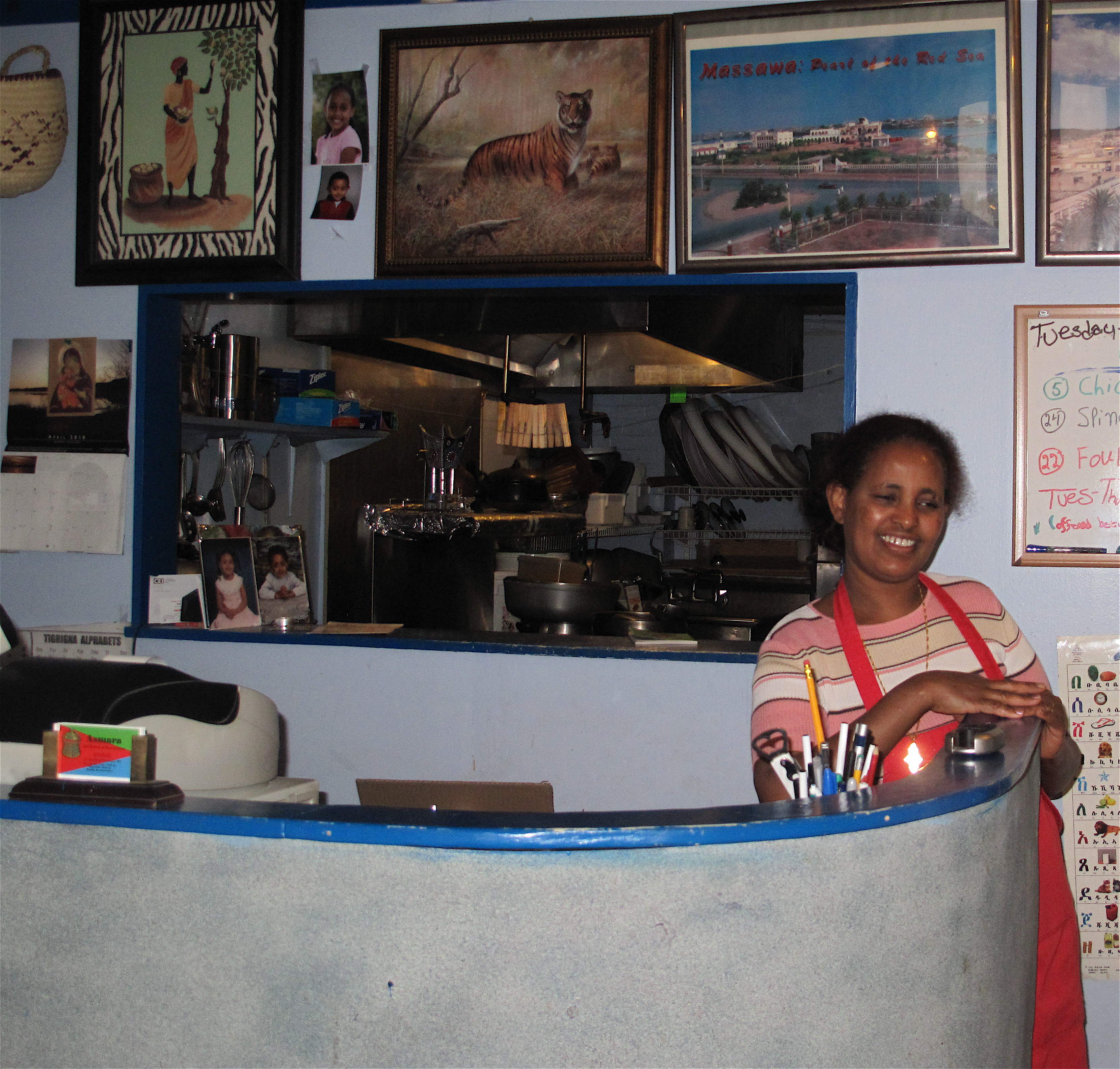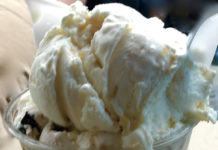 Asmara has been on my must-dine list for a long time, and I finally stopped by for dinner the other day. Now I didn’t dine in, as I had a long drive ahead of me and I was running late already, but I did pick up an appetizer and entree to go, after chef/owner Asmeret Teklu assured me it would reheat nicely in the microwave.
Asmara has been on my must-dine list for a long time, and I finally stopped by for dinner the other day. Now I didn’t dine in, as I had a long drive ahead of me and I was running late already, but I did pick up an appetizer and entree to go, after chef/owner Asmeret Teklu assured me it would reheat nicely in the microwave.
Asmara is hidden away on Oak Street, in the block between Congress and Free. It’s a small, storefront restaurant, quite unassuming, yet quite welcoming. Teklu is pretty much a one-woman show, and she greets visitors with a warm smile. The restaurant itself is quite pleasant, decorated with photos, baskets, and other artifacts complementing the Eritrean cuisine.
Did you raise an eyebrow on that one? Eritrea edges the Red Sea in eastern Africa and is bordered by Ethiopia, Sudan, and Djibouti. Once part of Ethiopia, it gained independence in the early 1990s after a prolonged struggle. Not surprisingly, the foods are similar. Asmara is the country’s capital.
Asmara (the restaurant) serves its dishes in the traditional way, on injera, a spongy bread made from unleavened teff flour. This bread is used as an eating utensil: You break off bits and use it to grab the main dish, which is usually a tsebhi, a stew of peas, lentil, and red pepper. It’s available vegetarian style or with chicken, beef, or lamb.
Each entree ($9-14) is accompanied by a salad and choice of vegetable (red lentil stew in red pepper sauce, collard greens and kale in a mild yellow sauce, or cabbage, carrots, and potatoes in a mild yellow sauce).
I ordered a beef sambusa appetizer ($1.95 each), which comprised ground beef, pepper, and onions wrapped in dough and deep fried, as well as the alitcha deho, (chicken stew), which came with three chicken drumsticks and a hard-boiled egg in a curried yellow sauce, accompanied by the collard greens and kale. Since I was taking it to go, the red lentil stew was substituted for the salad.
Three-plus hours later, I nuked everything, and the most enticing aromas, exotic yet familiar, filled the kitchen. Tom and I easily split this one dish, with enough leftovers for a generous lunch the next day. It was so delicious, Tom wanted me to figure out how to make it so we could have it more often.
If you dine at Asmara, beverages available include fresh-sqyeezed lemonade, mango juice, soft drinks, African sweet tea, African coffee, homemade iced tea, beer, and a homemade honey wine. Another possibility is a traditional coffee for four, during which coffee beans are roasted at the table.
Dessert choices are few, but the ligamat—fried dough balls seasoned with salt, sugar, cayenne pepper, and oil, and served with a maple syrup dipping sauce—definitely caught my eye. Next time—and there definitely will be a next time—I’ll dine in and end with that.












